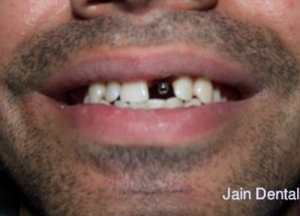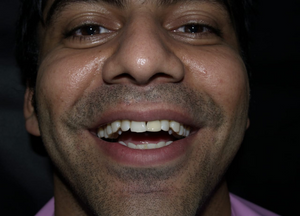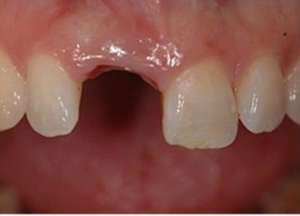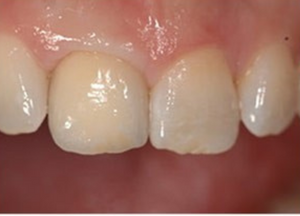
Orthodontics is a branch of dentistry which deals with misaligned teeth which results into bite problems or crooked teeth. It is quite common and the treatment mainly takes place before the child attains adulthood. The correction could take months or years once the appliances are fixed. Orthodontics corrections are done for a range of issues like overbite, open bite, cross bite or crowded or spaced-out teeth, overjet and reverse overjet etc. mostly, the corrections can be done thru appliances like braces, aligners, retainers, palate extenders, space maintainers and headgear. In some case jaw surgery also may have to be performed. Our team is one of the most capable team in the region to carry out orthodontics procedures.
” You are in safe and most capable hands “
– Patient Speak
Visited some top clinics in Delhi, but it became worse and more complex. Dr Nitin was able to rectify the outcome of earlier botched up treatments.
- Patient
Thanks for a great experience. Everything was very efficient and painless. There was a commitment to healthy & holistic treatment – a very good value for money.
- Patient
Before

After

Before

After

Orthodontics - More Info
Orthodontics is a branch which diagnose, prevents and corrects misaligned teeth and jaws. Orthodontics word is derived from two Greek words ‘Ortho’ means straight or correct ‘dontics’ mean teeth. Misalignment in teeth and jaws results into bad bite (malocclusion) which may be corrected either by appliances like braces, aligners etc., or by surgery of the jaws. Normally treatment is done in teenage years as it is easier to mold developing bones.
Symptoms
Crowded/Spaced Teeth: When there are too many teeth crowded or additional space between the teeth.
Bite Problems: There could be multiple types of issues of bites like overbite (called buck teeth also when front teeth protrude out), Open Bite (lower end of upper teeth do not touch upper end of lower teeth at ends), Cross Bite (teeth ends do not meet).
Overjet Problems: Increased over jet due to uneven jaw bone growth or reverse overjet when lower jaw protrudes beyond upper jaw.
Diagnosis
In the first orthodontics consultation, your doctor will carry out an oral exam, take photos of your face, and dental x-rays. A panoramic x-ray (360-degree x-ray) may also be taken. Impressions to create a mold of your teeth also may be taken.
Treatments
Orthodontics treatment for malocclusion may last from one to three years especially when appliances are used.
Non-Surgical Treatment
It mainly consists of fixing appliances in the mouth to correct the teeth,
Braces: Braces are the most common appliance which consists of a metallic or ceramic patch fixed to the middle of teeth and then connected by a wire or spring. The tightening or loosening of wires periodically help in repositioning the teeth. If braces are attached to the inside of teeth (facing tongue) then they are called Lingual braces.
Aligners: Consists of a number of plates which are clear or almost invisible thus making appearance better.
Retainers: These appliances are fixed after the treatment so that teeth do not move back to their older bad positions. They may be used for preventing thumb sucking also.
Palate Expanders: A plastic plate is fitted to the roof of the mouth and with help of screws it expands the joints in the bones to expand the palate area of the mouth.
Space Maintainers: On loss of a baby tooth, a space maintainer is fixed to maintain the space for permanent teeth to come and grow properly.
Splints – These appliances are fixed either to upper or lower jaw to tarin the jaw to close properly.
Lip and Cheek Bumpers: Fixed to keep lip or cheek away from the teeth so that they do not put pressure on teeth.
Headgear: It is fixed to the head to correct a number of defects and normally recommended along with other appliances like braces etc.
Surgical Treatment
Jaw surgery is recommended only when other treatments may not prove to be effective. The jaw bone is cut to shorten or lengthen the jaw. Wires, screws (surgical) or plates are used to support the jaw bone.
